Sony TA-F70 amplifier
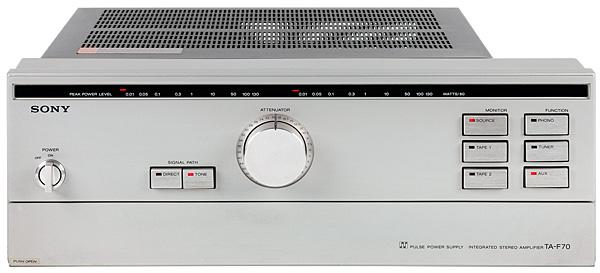
 It was an amp that gave fresh meaning to the term 'cooking on gas', but how does one of Sony's last classic super-integrateds shape up today? Time to find out...
It was an amp that gave fresh meaning to the term 'cooking on gas', but how does one of Sony's last classic super-integrateds shape up today? Time to find out...
The '70s was a time of great social change. At the beginning of the decade, black and white TVs, bicycles and outside toilets were the reality of life for many British people. But by the end of the '70s, most folks had colour TVs, family cars and swanky modern bathrooms – along with fitted kitchens, wall-to-wall carpeting and stereo systems in their homes. Although the music centre was the height of fashion, separates hi-fi was growing fast and many were willing to pay for serious equipment.
Costing £220 when new, the chunky TA-F70 integrated amplifier you see here was very much a premium model, second only to the company's range-topping TA-F80. It is typical of Japanese products of the period, being large, conspicuously well built with a thick alloy front panel and decent pressed steel chassis, plus switchgear with a beautifully precise action and a wide range of facilities.
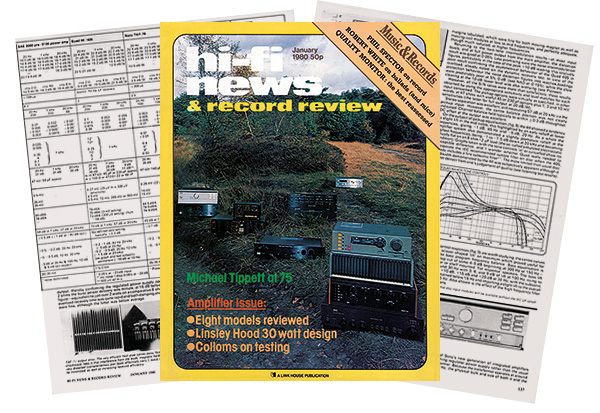
The mistake that some British audiophile purchasers made, however, was to assume that – just because the TA-F70 didn't look like it had been bashed together in a shed – it could not possibly be a serious audiophile product. At the time, the vogue for more minimalist, British-made hi-fi reigned supreme, with A&R Cambridge and Nytech being the staple diet of the UK's high priced integrated amplifier market. Yet in Japan, this Sony amp would have to sell against facility-rich products as well as sounding really good – going up against the likes of Hitachi's MOSFET-powered HA-7700 [HFN Feb '18] and Pioneer's more conventional but flashing-light festooned SA-8800, in a cut-throat marketplace.
Piped Music
Sony had already shown its credentials as a serious innovating company with its high-end V-FET (Vertical Field Effect Transistor) amplifiers – the technology developed in conjunction with Yamaha – just a few years earlier. These innovative products garnered great praise for their sound but proved far from durable over the medium to long term, so the Japanese giant decided to take a different approach.
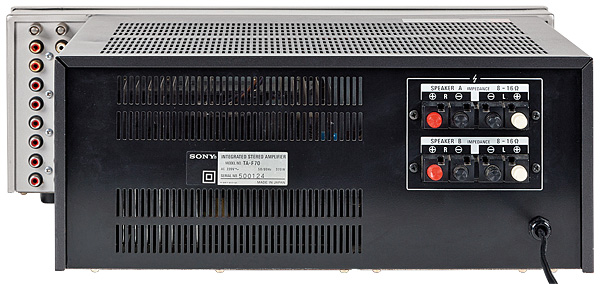
Rather than coming up with another new type of output device, this time Sony combined more conventional power transistors with an unusual form of cooling. A novel 'heat pipe' was filled with Freon (a CFC gas, no longer used in refrigerators) which transferred the heat away to multiple thin cooling fins situated further away from the amplifier's power transistors. This allowed shorter signal paths to be used, improving sound quality.
The bipolar output transistors were high bandwidth, 'high fT' (transition frequency)types running in parallel, with only small amounts of negative feedback used. It was an elegant idea. Instead of throwing vast amounts of money at new and unproven technology, Sony engineers fettled existing tech to work better with lateral thinking.
The other innovation – or at least the fitment of something that wasn't commonly seen in domestic hi-fi amplifiers of the late '70s – was a Pulse Power Supply. This rectified the line voltage, chopped it at 20kHz, inverted it and then rectified and filtered it again. This was done well and properly shielded, making it less noisy than many power supplies used in hi-fi applications. It also took up less space and weight, which helped with the shipping costs all the way from Japan.
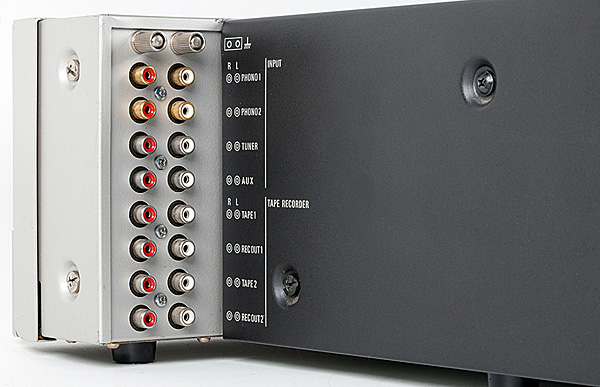
In addition to this, Sony fitted 99.99% pure copper wiring inside, showing that the company had an early interest in cables and their effect on sound. In other respects it was also thoroughly engineered, with a FET buffer stage between the pre- and main amplifier section, for example. Source selection was done by superior-sounding electronic switches, with a decent volume potentiometer fitted for good measure.
The TA-F70 is a complex amplifier that is packed with circuitry, yet is well conceived and neatly packaged. Its case is strangely configured, with the input socketry located just behind the 'open backed' fascia panel on the right. This is supposed to make things easier when plugging in bits of equipment – and to a degree this is true, especially if you're using an equipment rack – although it does make the installation look a little messy if the amplifier is standing alone.
Its fascia is a model of clean design, with an aluminium flap that hinges down to reveal a host of minor controls, but when it is in the up position things look clean and minimalist. From left to right, you get switching for two pairs of speakers (both pairs cannot run simultaneously) plus bass, treble and balance knobs. Next to this is a tape copy selector (twin tape monitor loops are provided), plus switches for stereo/mono, low filter and phono 1/2. The latter gives two different capacitance settings for the 'head amp', which doubles as an MM/MC selector.
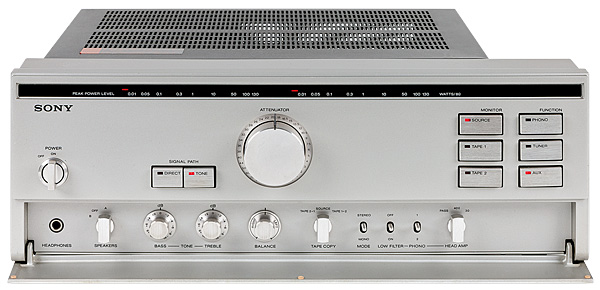
The main section of the fascia above the fold-down flap has the power switch on the left, tone control on/off switching, the large volume control knob, tape monitoring and input selection. You get two tape inputs, two line-ins (tuner and aux), plus phono. By 1979 standards this is a well equipped amplifier.
Killer Switch
Sony watchers will be intrigued to discover that the main power switch is the sort exclusively reserved for the company's cost-no-object top end models, such as the Esprit series [HFN Apr '11] current at the time. In the late '70s, this must have felt a bit like receiving the key to the executive wash room. Last but not least, at the top of the fascia is a row of LEDs hidden behind a smoked Perspex strip. This gives output power indication on both channels from 0.01W to 130W/8ohm [see PM's Lab Report]. They offer a fast response but still manage to be far less 'gaudy' than the amp's Pioneer SA-8800 rival.


















































